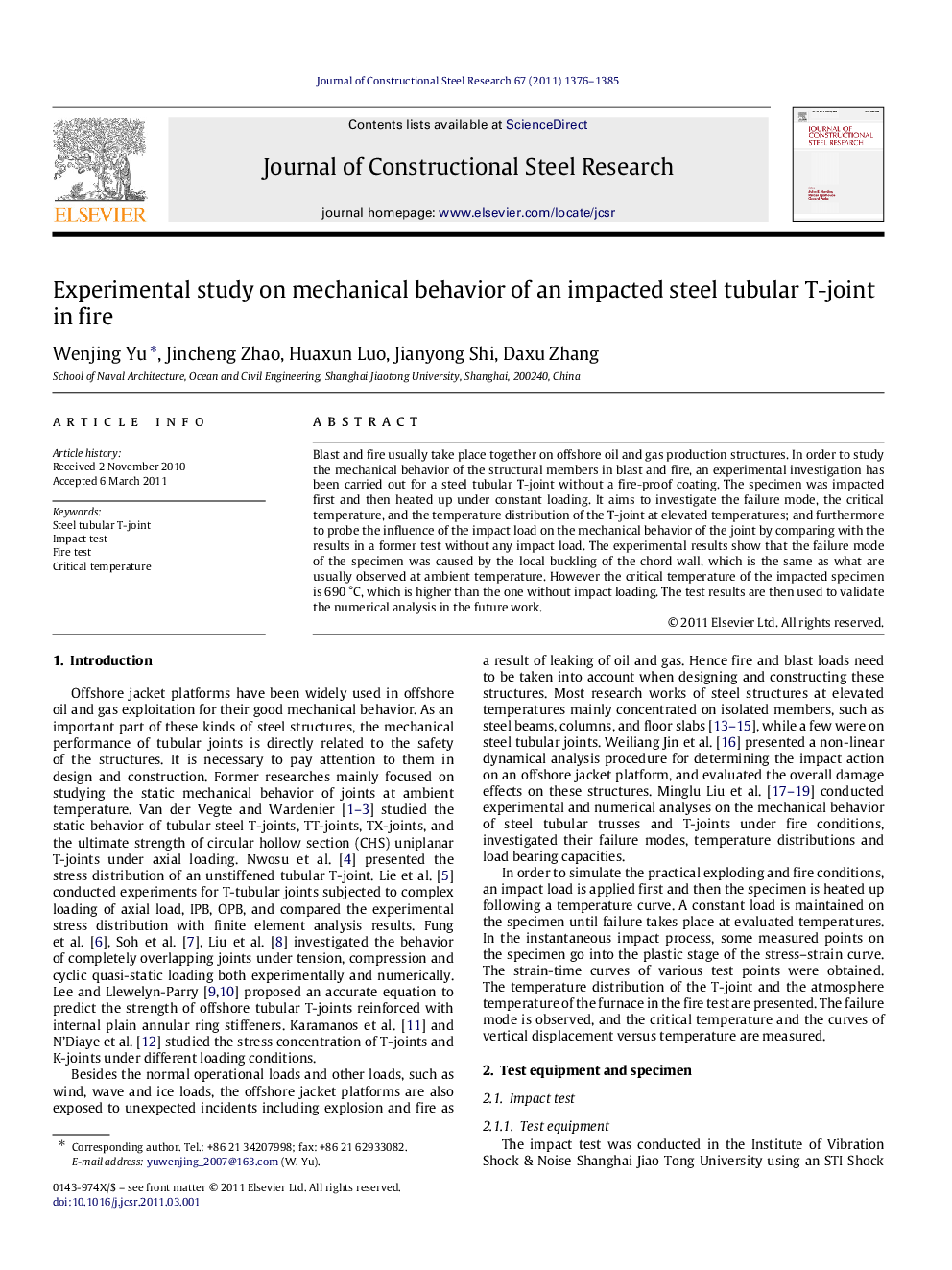| Article ID | Journal | Published Year | Pages | File Type |
|---|---|---|---|---|
| 285567 | Journal of Constructional Steel Research | 2011 | 10 Pages |
Blast and fire usually take place together on offshore oil and gas production structures. In order to study the mechanical behavior of the structural members in blast and fire, an experimental investigation has been carried out for a steel tubular T-joint without a fire-proof coating. The specimen was impacted first and then heated up under constant loading. It aims to investigate the failure mode, the critical temperature, and the temperature distribution of the T-joint at elevated temperatures; and furthermore to probe the influence of the impact load on the mechanical behavior of the joint by comparing with the results in a former test without any impact load. The experimental results show that the failure mode of the specimen was caused by the local buckling of the chord wall, which is the same as what are usually observed at ambient temperature. However the critical temperature of the impacted specimen is 690 °C, which is higher than the one without impact loading. The test results are then used to validate the numerical analysis in the future work.
► Impact and following fire test with the steel tubular T-joint has been carried out. ► The acceleration and instantaneous dynamic strains in impact test have been recorded. ► Failure mode, critical temperature, and displacement of the joint have been obtained. ► The final vertical displacement is larger than that of the T-joint without impact. ► The critical temperature is higher than that of the T-joint without impact.
